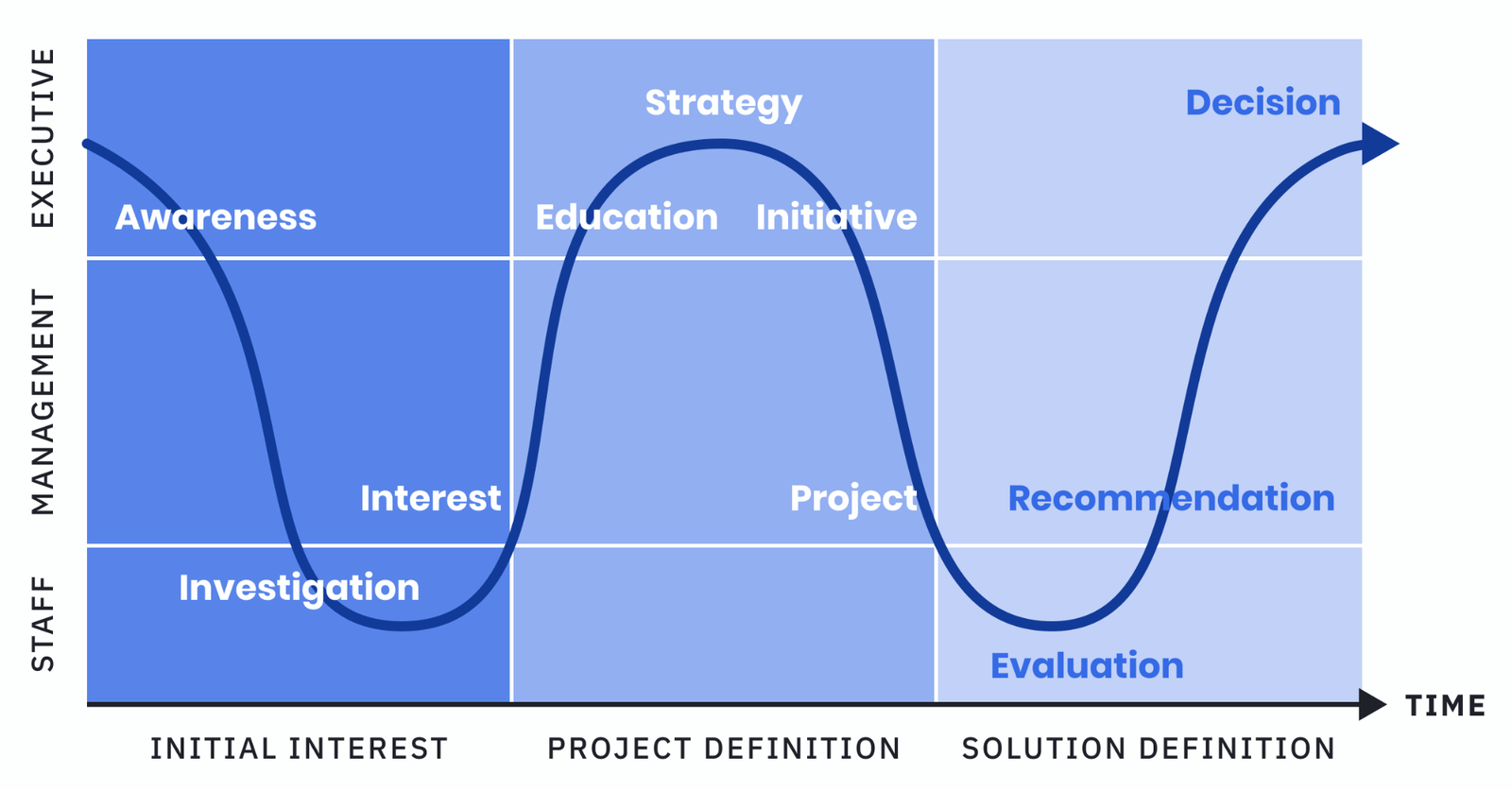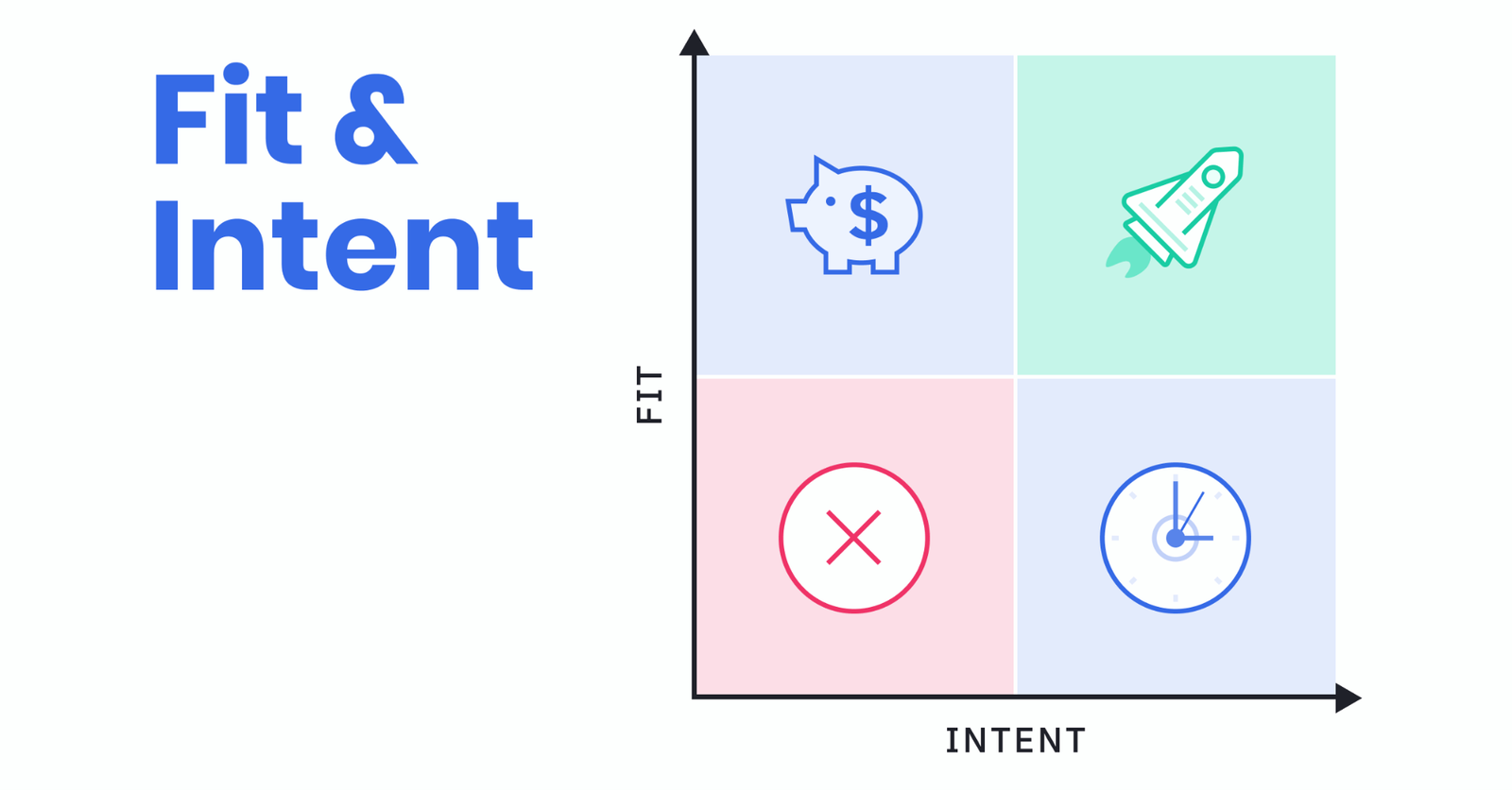How do you decide which leads are worth your valuable time?And which leads are most likely to turn into thriving business for you?At ActiveCampaign we’ve scaled our team to 100+ salespeople working thousands of inbound leads – which makes lead qualification a huge priority.From our experience, we recommend a lead qualification approach that revolves around the concepts of fit and intent.
- Fit: how well our product(s) fit the needs of a given customer or prospect. Can the solutions that ActiveCampaign provides improve that business’ ability to make money, save time, or deliver better customer experiences. If so we would consider them to be a ‘fit.’
- Intent: how actively a given customer or prospect is pursuing a solution. Have they recognized that a problem exists, identified that they need to make a change in their environment to address it? If so, we would consider them to have ‘intent.’
- Initial Interest
- Project Definition
- Solution Definition

Different stages of the project lifecycle give you different ways to measure engagement – and use different fit and intent data to determine which leads to focus on.Generally, the level of intent grows as a business advances through the project lifecycle. It’s important for salespeople to understand the level of intent because we need to engage customers and prospects differently based on where they are.Doing a quick demo and pushing to close a business that is in the ‘investigation’ portion of this process will likely scare them away – or the demo is likely to not be a success because their requirements are still somewhat unclear (i.e. it isn’t yet clear if they are a good fit for your product).At ActiveCampaign, we think of fit and intent in terms of quadrants. After looking at engagement and lead qualification information, we use a lead’s position on this matrix to understand how to talk to them next.

High Fit/High Intent leads are great for any business. These are relatively easy to convert and in many cases convert on their own (or with limited influence from sales). It’s important that we execute well and maximize these. At the same time, the pool of high fit/high intent leads likely isn’t large enough to scale a business.Low Fit/Low Intent leads are people who don’t need your solution and aren’t especially motivated to look for a solution at all. They can be nurtured via automation, but they aren’t a priority for outreach or follow-up because they’re less likely to make a purchase decision – and even if they did, it wouldn’t be the ideal case for either you or the customer.Low Fit/High Intent leads are a danger zone. Often, these look like clients with big needs but unclear ideas about how to address their problems. It’s not uncommon for a salesperson to invest time in trying to force a fit because the client is motivated and has a clear problem – but because the product you sell isn’t ultimately what the client needs, everyone winds up wasting their time. At some point, no matter how big the need, we must be able to make a clear connection between the need of the customer and the ‘fit’ or ability for you to solve their problem.High Fit/Low Intent is the moneymaker. This is the reason sales and marketing exist. These customers or prospects are either
- Unaware that they have a problem, or
- Unaware that we can help them solve a problem they are aware of
What questions should you ask prospects?
How can you figure out if your leads have high fit or intent? Features like lead scoring and contact scoring are one method, and some ActiveCampaign users have been able to save as many as 10 hours per week by automatically qualifying leads.What about once you get on the phone? We spoke to our sales experts to identify the top questions you can ask to discover if someone is ready to do business with you.Fit questions are all about being curious about the prospect. Once you know what’s important to them, you’ll know if, and how, your solution can help address their needs.Questions to assess the fit of your leads:
- Tell me more about your business and your role?
- What are some challenges that you’re currently facing?
- What have you already tried to address these challenges?
- If you could change one thing about how you’re currently doing things, what would it be?
- How would that help you?
- Do you use any tools today to help address these things?
- What do these tools do that you couldn’t live without?
- What do you wish they could do?
Questions to assess the intent of your leads:
- What’s driving your interest in taking the call today?
- How are those challenges impacting your business?
- How important is it for you to solve these challenges?
- For the business?
- For you personally?
- If we can solve X, what future goals can be achieved within your business?
- Why is now the time to address this?
- What happens if you make no change?
- Do you have a deadline for addressing these issues or solving these challenges?
- If we can show you a solution fit, what could prevent this from moving forward between now and your implementation deadline?
In lead qualification, which leads should you focus on?
As you approach lead qualification you should be open to bringing anything into your funnel that is high fit. Our role as sales professionals is to manage and develop intent — and thus, you shouldn’t automatically exclude low-intent leads from our sales pipelines.In fact, low-intent leads are the biggest opportunity for salespeople and marketers.On the other hand, exclude people who are both low intent and low fit. Until something signals a change in their environment, needs, or position, these people probably aren’t great prospects.If your fit and intent data suggest that someone is low fit but high intent, be careful. Ultimately, you are taking a gamble — the gamble being the investment of your time, which is your most precious resource.For each low fit/high intent lead, you have to make the call as to whether your time is best spent on that prospect/customer or if trying to build more pipeline or nurture other deals will provide a greater return for you and for the business.









